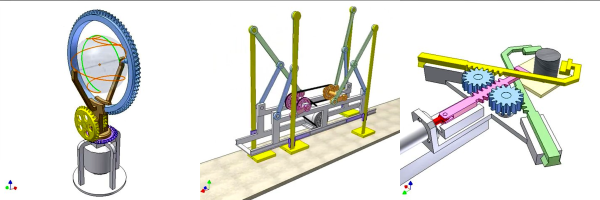Hackaday writer [Joshua Vasquez] wrote about the mechanical difference between the Core-XY and H-Bot movements commonly used in 3D printers on his personal website. There are so many things a beginning mechanical designer can overlook when setting out to make a movement. Sometimes,in the case of these movements, they aren’t readily apparent, and like finding a troublesome pattern in code; have to be shown before the mind picks them up in future designs.
[Joshua] starts by describing how each movement works. At first glance, the H-Bot movement seems simpler and more effective than the Core-XY. The Core-XY uses more belting, and some of the pulleys are out of plane with each other. However, this is done to eliminate a moment put on the frame in the H-Bot design. This moment can throw off the accuracy of the movement in unpredictable ways.
The Core-XY movement is one of our favorites. It keeps the motors stationary. It’s compact, precise, repeatable, and linear. It’s good to understand the mechanical reasons for this. Just like learning the SQL database calls a library has been obfuscating for you lets you write better code.





 In this excellent video, he describes the simple (but remarkably sophisticated) engineering of the mechanism that allows a pen to pop the ballpoint mechanism out, then back in again. It is a great example of how to illustrate and explain a complex concept, much like his videos on how
In this excellent video, he describes the simple (but remarkably sophisticated) engineering of the mechanism that allows a pen to pop the ballpoint mechanism out, then back in again. It is a great example of how to illustrate and explain a complex concept, much like his videos on how 











